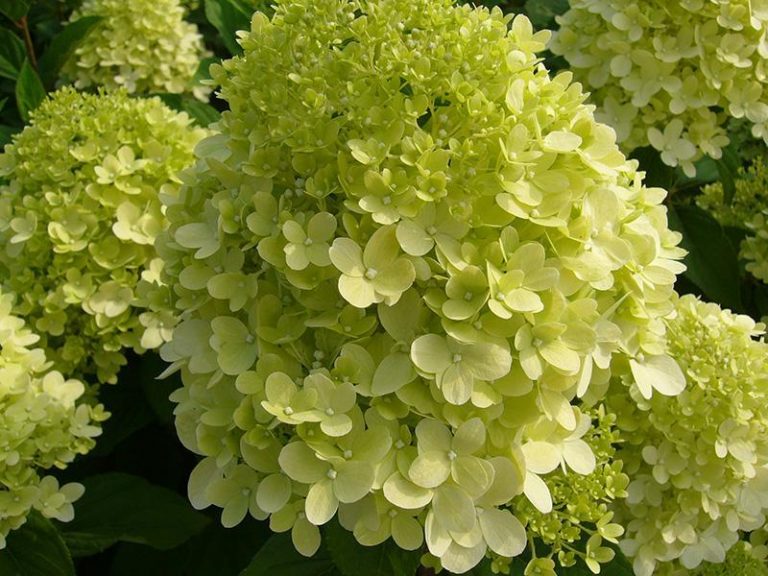There are many decorative flowers that bring joy to our garden or our house, so having plants in the house is ideal for decorating the home.
In addition to decorating, gardening is also a very pleasant practice, as it teaches us to value and care for plants, as well as to know what type of plants suit the environment where you live or the soil you have.
Of the flowers that we can plant at home, hydrangeas are the ones that grow best and are the most pleasant for us to grow and care for, for this reason many choose to care for hydrangeas instead of choosing other types of plants for home or garden decoration. Yard.
Taking care of hydrangeas at home is relatively simple; you just need to know how to plant them, how to grow them and what kind of basic care they need. In case you have some hydrangeas at home, either because they were given to you or because you bought them personally because you want to take care of hydrangeas at home, then we recommend that you continue reading this article with the instructions indicated to be able to take care of hydrangeas at home. Watch with us how to care for hydrangeas at home.
What do you need to care for hydrangeas?
- Earth, water, sun.
- Fertilizer, manure, vitamins for plants.
Instructions for caring for hydrangeas
- Understand the climate where you live. To be able to take care of hydrangeas, you have to take into account the climate where you live, hydrangeas are from natural climates, temperate to hot, for which, during the days in which the temperature has dropped in great quantity, it is important that so that the hydrangeas do not suffer damage from the cold and die, be protected. For this you can put the hydrangeas in a greenhouse, or bring them into the house during the cold weather, this preventive measure will prevent the cold from damaging the hydrangeas.
- The soil where we are going to take care of the hydrangeas must have a slightly higher acidity level than in other plants such as roses or cempasuchiles. In addition to having a higher level of acidity that we can control with homemade compost and fertilizers, hydrangeas need a soil rich in nutrients that can help the development and flowering of hydrangeas. Therefore we recommend natural fertilizer and natural compost. You can get the fertilizer in almost any home store, any natural fertilizer is good, but the donkey fertilizer can be one of the best options to choose.
- In order to have a clean and functional soil, you need to mix the soil in which you are going to plant the hydrangeas, with new soil and compost. Sometimes just applying compost with soil is enough to make the soil ready for planting. What we cannot forget is the importance of the soil being easy to drain, since the stagnation of water in combination with the mud and the residues that the earth may contain, will favor the rotting of the hydrangeas, thus preventing them from developing correctly. And accelerating their withering.
- Also avoiding extreme heat is important for the growth of these plants. To take care of hydrangeas we also have to take into account that extreme climates affect them. We already made it clear that the cold can damage them, but also very hot climates. During hot days, putting the hydrangeas in a shady and cool place is the most recommended. When watering the hydrangeas, the water must be fresh, cold, fresh from the faucet or the well, never with warm water, much less hot, this could end up killing the plant. In addition to taking care of the water temperature, when you water the plant this should be in the afternoon or morning, because if you water the hydrangeas during the day when there is a lot of sun, the water will evaporate and the heat of the hot water in the soil can damage it.
- Do not drown the plant, that is, do not water it so much that a puddle forms on the ground, to begin with, if the soil is properly arranged to house the hydrangeas, the water does not have to be puddled, but even a soil well prepared can become waterlogged if you add too many liters of water. Make sure the soil is always moist, but not excessively, much less dry. In cold weather, the ideal is not to water the plant with extremely cold water; instead you can wait for the water to take on a less cold temperature.
- It is during the summer that the flowers will emerge. You will be able to see these flowers for about a month, but in order to achieve a successful flowering, you need to take care that there are no pests that affect this plant. Hydrangeas have the problem that there are types of pests and infections that can affect them. The most common pests that affect plants are aphids and spider mites. Regarding diseases, fungi such as powdery mildew are the ones that can cause your plants to rot. Using a plant insecticide and plant vitamins can help your hydrangeas resist pests and infections and recover from those that affect them.
- Although to care for hydrangeas it is necessary that the soil has a slightly high level of acidity, if the acidity is too high, the plant could develop a disease called choruses. When the soil is too acidic, plants do not assimilate or consume the iron necessary for their development, becoming malnourished and withering faster. Fertilizers and products high in iron help counteract and prevent these conditions. Hydrangeas take on a slightly yellowish color in plants when this disease occurs, however, we should not confuse this with wilting and autumnal changes, which also have yellow or orange tones.


















